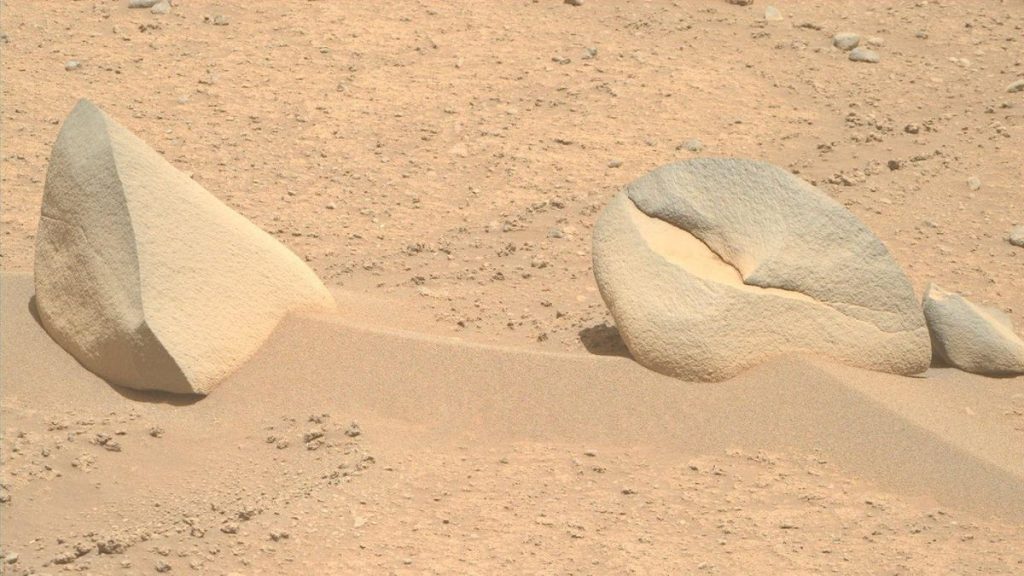It’s shark week on Mars. NASA’s Perseverance rover is rolling across the Jezero Crater on the red planet while conducting serious science work. It’s also doing some sightseeing along the way. A photo snapped by the rover on August 18 has attracted attention from space fans for how it reminds them of ocean animals on Earth.
Mars is a rocky place and sometimes those rocks trigger pareidolia, a very human phenomenon that lets us see familiar objects in random shapes. It’s like spotting a sheep in a cloud. There are two prominent rocks in the rover’s recent image. A sandy ripple stretches between them. One rock looks like a shark fin and the other like a crab claw, the Perseverance team noted in a tweet on Monday.
Mars fans chose the snapshot as an image of the week for the Perseverance rover. The public can browse raw images sent back the rover and click on a thumbs-up button to show which ones are favorites. Every week, NASA tallies up the votes and highlights the top image. Funky rock formations often win out.
NASA’s creative take on the rock shapes is all about having fun. “This rocky duo was spotted hanging out together in a wind-swept area. I spy a…crab claw? Shark fin? Comment below with what you see,” the rover team tweeted. Twitter users saw different sights, many also ocean-related. Commenters mentioned a whale, a dolphin, the head of a sea turtle, Stegosaurus back plates and a coffee bean.
Mars rocks are capable of taking on fantastical shapes due to erosion. Scientists have found evidence that Mars was once a more watery place. The Jezero Crater is even home to an ancient river delta. Water is an excellent sculptor of rocks, but the planet’s winds also carve up the local geology. “The abrasion process can form flutes, pits, and grooves in rocks, leading us to see peculiar illusions in their shapes and shadows,” wrote Perseverance team member Bavani Kathir in a mission update last year.
Perseverance captured the rocky view with one of its mast-mounted cameras. These cameras are located on the “head” of the car-sized rolling machine and are equipped with powerful zoom lenses. Here’s another image from the same day showing a wider view of the landscape:
Scientists have yet to find proof of life—present or past—on Mars. But they’re looking. One of Perseverance’s big tasks is to seek out evidence of ancient microbial life on the red planet. It’s not equipped to make a definitive discovery on its own, so it’s collecting rock samples and stashing them in tubes on the Martian surface. NASA hopes to retrieve some of the rover’s rock collection via the ambitious Mars Sample Return mission and bring those precious tubes to Earth for closer study. That sort of detailed scrutiny is what’s needed to better understand Mars history and its potential for having hosted life at one time.
Today, Mars is inhospitable. Perseverance is built to withstand rough conditions, from dust storms to rugged terrain to frigid temperatures. One thing it won’t have to worry about, though, is shark attacks. As far as we know, sharks are a distinctly Earth animal.
Read the full article here










